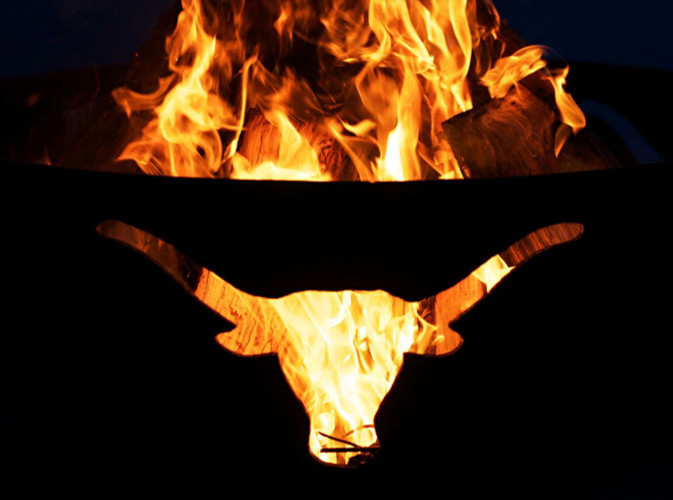Jan 27th 2020
The Patina Process
At Fire Pit Art®, we get many inquiries regarding our iron oxide patina and the process of the darkening metal. You can find a before and after photo of the process on our website for a better visual. To help better understand the process and material that makes up our Fire Pit Art® fire pits, we have created a guide to assist in the understanding of these elements.
Unfinished cast metals tend to wear without difficulty regardless of the circumstances. Cast iron, aluminum, and bronze are all known to last decades with little effect on the metal when left unfinished. When a metal is naturally changed by atmospheric exposure to elements, the process is known as patination. When metal begins to corrode naturally, the thin outer layer of oxides, known as the patina, begins to slow down the act of further corrosion. This patina can be found as a rusted orange color on the outer layer of your Fire Pit Art® fire pit before its first burn.
Constructed by hand with durable quarter-inch mild carbon steel, our fire pits are made with longevity and durability in mind. The steel is then sandblasted down to the bare steel, where we apply our “secret sauce” to aide in the patina process. Other fire pits are known to patina in a different fashion, with some areas maturing faster than others. With a Fire Pit Art® fire pit, our “secret sauce” eliminates this issue and controls the maturing and oxidizing to occur evenly. Upon receiving your Fire Pit Art® piece, you will notice the dusty rust or patina coloring on the outer layer, as mentioned. After the first fire, this patina will begin the maturation process and starts to darken to its final deep mahogany color.
Tips for Your Fire Pit Art® Patina Process
When using your fire pit, keep in mind that wood-burning fire pits will mature faster than gas-fueled fire pits. The difference in the processing speed is due to the burn temperature given by the different fuel types, with wood burning at 900 degrees and gas at 200 degrees each burn. Regardless of the fuel type, you will notice the initial darkening after the first fire.
During the patina maturation process, be sure to avoid tarping or covering your fire pits. The tarp will stop the oxidation process, which requires oxygen to occur and cause your fire pit patina to blacken. There have also been many cases of the tarp color being transferred to the steel, leaving an undesired appearance.
When your fire pit is in the maturing process, it is crucial to keep wet leaves and debris off the surface. Once the steel completely matures, the exposure to these elements will not cause an issue.
Although initially, the surface may appear rusty with the patina covering, this maturation process occurs at only the surface level. The Fire Pit Art® pieces themselves will not rust through, rot, or warp over time. Our hand-crafted fire pits are built to last a lifetime, and with each fire, you will notice the dark maturing of the patina.
Our uniquely designed pieces are showcased in the Vancouver Winter Olympics, various hotels, restaurants, and lodges in the United States, Australia, and Europe. Our creative designs are coated inside with high-temperature resistant paint as well as the beautiful darkened Iron Oxide Patina finishing discussed. Our pieces are built with rain drains on the bottom and customizable options that fit every need. No matter the location or occasion, Fire Pit Art® is the company you have been looking for to match your fire pit need! Browse our collections for the perfect design.

